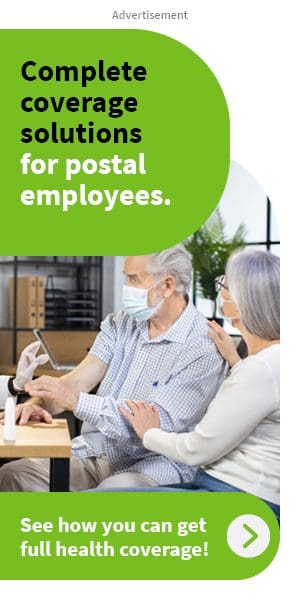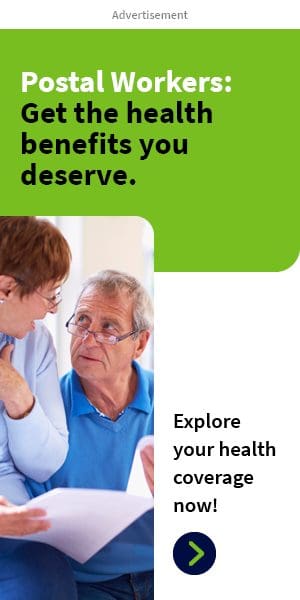Key Takeaways
-
Eligibility for Postal Service Health Benefits (PSHB) in 2025 involves more than just being a USPS employee or retiree—specific timelines, employment categories, and Medicare integration requirements also play a major role.
-
Failing to meet lesser-known eligibility criteria could result in loss of health benefits or missed enrollment opportunities—especially for retirees and family members.
Understanding PSHB Eligibility in 2025
You might think your job title alone guarantees eligibility for the new Postal Service Health Benefits (PSHB) program, but that isn’t always the case. As of 2025, the PSHB program has fully replaced the Federal Employees Health Benefits (FEHB) Program for USPS employees, retirees, and their eligible family members. However, PSHB eligibility includes several less-publicized rules that can determine whether you’re covered or left out.
Let’s break down these critical eligibility rules, so you can make informed decisions before the next enrollment period.
Who Is Automatically Eligible for PSHB in 2025?
To start, the following groups qualify for PSHB coverage as of January 1, 2025:
-
Current USPS employees (career or certain non-career employees with sufficient service time)
-
Postal retirees who receive an annuity from the Office of Personnel Management (OPM)
-
Eligible family members including spouses and children under age 26
But while these are the standard eligibility categories, there are layers of nuance that can affect your status.
1. Retirees Must Meet Both Service and Timing Requirements
To remain eligible for PSHB after retirement, you must meet both of the following conditions:
-
Retired with an immediate annuity, meaning you didn’t defer your annuity past your separation date.
-
Enrolled in FEHB (the predecessor program) at the time of retirement or continuously since your first opportunity to enroll.
If you retired before January 1, 2025, and met these conditions under FEHB, your eligibility carries over to PSHB. However, if you deferred retirement or were never enrolled in FEHB, you may not qualify.
2. Certain Employees Must Be Enrolled at a Specific Age
One of the newer rules applies to employees who were 64 or older as of January 1, 2025. These individuals are exempt from the mandatory Medicare Part B enrollment requirement that applies to other Medicare-eligible enrollees.
This timing detail matters: if you turn 64 after January 1, 2025, the exemption doesn’t apply. This could significantly impact your premiums and eligibility for certain PSHB plan benefits if you don’t enroll in Part B when required.
3. Medicare Part B Enrollment Isn’t Optional for Many
PSHB integrates with Medicare, but unlike in the FEHB system, some enrollees are now required to enroll in Medicare Part B to maintain PSHB coverage. This rule affects:
-
Retirees who become eligible for Medicare on or after January 1, 2025
-
Covered family members who also become Medicare-eligible in 2025 or beyond
If you or your covered dependents fall into these categories and fail to enroll in Medicare Part B, you could lose access to drug coverage and see your PSHB benefits reduced.
4. Family Members Have Their Own Criteria
Just being related to a USPS employee or retiree doesn’t guarantee PSHB eligibility. Family members must meet specific criteria:
-
Spouses are eligible as long as the marriage is legally recognized and they are listed under the employee’s or retiree’s enrollment.
-
Children under age 26 are eligible, including adopted children, stepchildren, and foster children with a parent-child relationship.
-
Disabled adult children over age 26 may be eligible only if they were covered under FEHB before turning 26 and continue to be certified as incapable of self-support.
Divorced spouses are not eligible, even if a court order mandates coverage—unless they qualify under another category (e.g., former employee themselves).
5. Non-Career Employees Have Conditional Access
While career USPS employees are generally eligible, non-career employees (like those in the Postal Support Employee or Casual workforce) face more restrictions:
-
Must have completed one year of continuous service
-
Must work a minimum number of hours to qualify
-
Are typically eligible only for certain PSHB plans designated for non-career roles
It’s important to verify your status and coverage tier every year during the Open Season.
6. Breaks in Coverage Could Disqualify You
Continuity of coverage is critical. If you were covered under FEHB and had a break in coverage due to cancellation or missed payments, you may lose eligibility for PSHB—particularly if you’re retired or approaching retirement.
Even a short lapse in coverage could mean forfeiting lifetime access. Make sure you:
-
Continue premium payments without interruption
-
Re-enroll during the next Open Season if a break occurred
7. Enrollment Platform Access Depends on Your Status
Your eligibility also affects how you enroll:
-
Current employees must use LiteBlue to access the PSHB enrollment system
-
Annuitants use the KeepingPosted.org portal
Mistakes in the platform you use could result in enrollment errors, missed deadlines, or even delays in coverage. Always verify your access credentials and update your contact information in the appropriate system.
8. Special Enrollment Periods May Be Limited
Outside the November-December Open Season, your ability to enroll in PSHB or make changes is typically limited to Qualifying Life Events (QLEs) such as:
-
Marriage or divorce
-
Birth or adoption of a child
-
Loss of other coverage
These events must be reported promptly—usually within 60 days—to maintain eligibility. If you miss that window, you could be locked out of coverage until the next Open Season.
9. Medicare Advantage Doesn’t Replace PSHB
Some retirees explore Medicare Advantage plans thinking they can drop PSHB, but this strategy can backfire. In 2025, PSHB plans offer integrated prescription drug coverage and may include cost-sharing reductions when you’re also enrolled in Medicare Part B. Dropping PSHB could:
-
Disqualify you from rejoining later
-
Eliminate employer contributions to your health coverage
-
Disrupt access to prescription benefits coordinated under PSHB’s Part D Employer Group Waiver Plan (EGWP)
Staying enrolled in PSHB often preserves more comprehensive benefits compared to switching entirely to a private plan.
10. Living Abroad or Using VA/IHS May Grant Exemptions
Certain enrollees are exempt from mandatory Medicare Part B enrollment if:
-
They live permanently outside the United States
-
They receive care exclusively through the VA or Indian Health Services (IHS)
These exceptions allow for continued PSHB eligibility without incurring Medicare penalties or coverage disruptions. However, proper documentation must be submitted.
What You Should Do Next
Understanding the full scope of PSHB eligibility helps you avoid costly mistakes. Whether you’re actively working, nearing retirement, or managing coverage for a family member, the eligibility rules outlined above matter.
Here’s what you can do:
-
Review your PSHB status annually, especially during Open Season
-
Confirm Medicare timelines and enrollment obligations
-
Keep documentation updated in LiteBlue or KeepingPosted.org
-
Contact a licensed agent listed on this website if you have doubts about your eligibility or next steps
Stay Eligible, Stay Protected
Eligibility for the PSHB program in 2025 isn’t a one-time determination—it’s an ongoing process shaped by age, service time, Medicare status, and family structure. Don’t assume your coverage is secure without checking the details.
Take the time now to clarify your eligibility, plan ahead for any Medicare requirements, and protect your health benefits long term. If you’re uncertain, get in touch with a licensed agent listed on this website for personal guidance.











